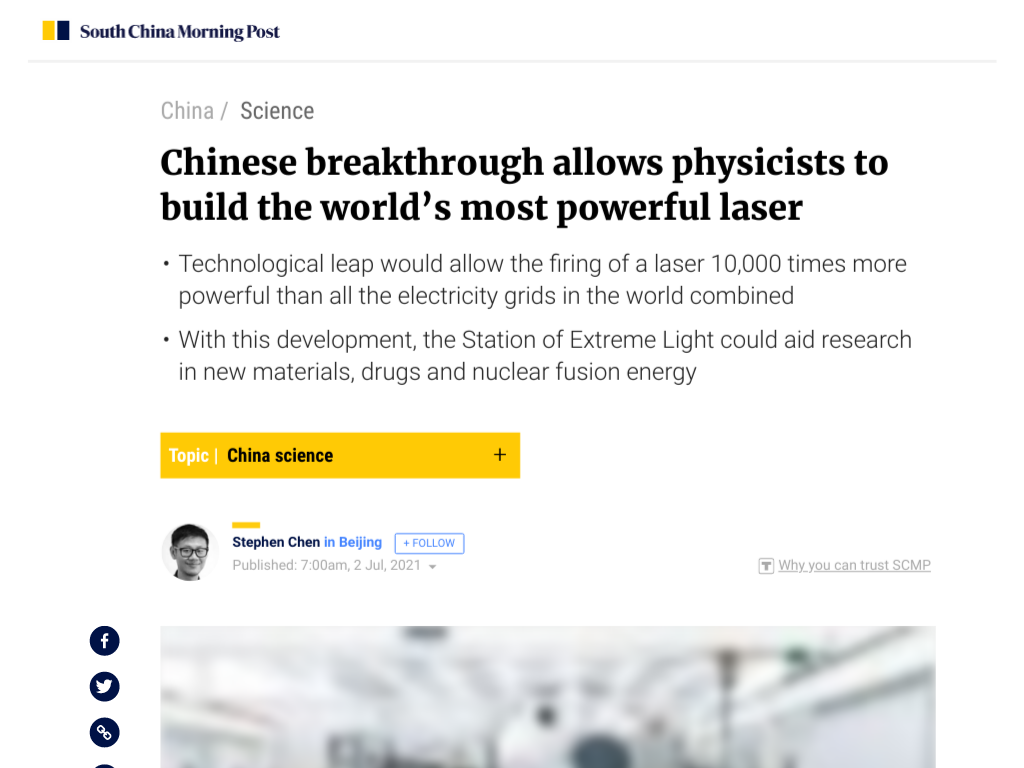A research team in Shanghai has achieved a technological breakthrough to allow them to build the most powerful laser on the planet.
The leap means they could fire a 100-petawatt shot in about two years, a scientist involved in the project told the South China Morning Post on Tuesday.
That single pulse would be 10,000 times more powerful than all the electricity grids in the world combined.
In the incredibly brief but intensive flash of light, humans would witness materials coming from nothing for the first time.
Though the laser beam eventually would be fired up in extremely short pulses – with no risk of a blackout on Earth – experts believe it would tear apart space-time for a brief moment to allow scientists to glimpse new physical phenomena that for now only exist in theories.
Einstein’s famous equation E=mc2, for instance, explains that a small amount of matter can be converted to an enormous amount of energy. The atomic bomb proved it. But no one has shown how – or whether – it works the other way round.
The extremely powerful laser beam, when focused on an extremely small spot in a vacuum, can make a subatomic particle pop out of the blue, according to the prediction of physical theory. The SEL was designed to make this happen.
But the use of the facility will not be limited to satisfying physicists’ curiosity. It could aid research in a wide range of areas, from new materials and drugs to nuclear fusion energy. A laser scientist with the Institute of Physics at the Chinese Academy of Sciences in Beijing, said the new Shanghai laser facility would strengthen China’s leading position in the high-power laser race.
Some research teams in Russia, Europe and the United States have proposed similar projects, but none has received sufficient funding from their government, said the physicist who was not involved in the project and requested not to be named because he was not authorised to speak to the media.
“China will almost certainly win,” he said.
The current record is a 10 petawatt pulse, and their laser will produce a 100 petawatt pulse



:arm-L: :hammer-sickle: :arm-R: